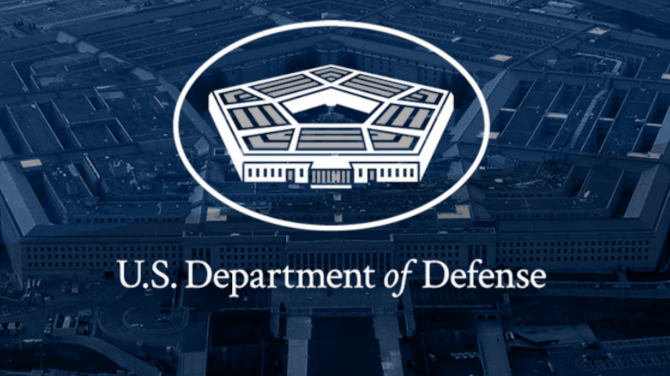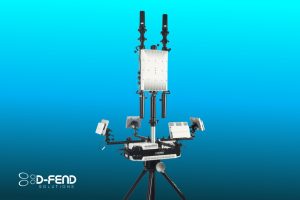The Legal Battle: Teal Drones vs. Vector Defense
A legal clash between Teal Drones (a branch of Red Cat Holdings) and emerging competitor Vector Defense is creating ripples from a Utah courtroom all the way to the Pentagon. The outcome of this case is pivotal for influencing the direction of America’s strategic drone industry at a time when the government and military are keen to enhance domestic drone capabilities and lessen dependency on foreign technologies.
Why This Case Matters to Washington
What makes the Teal vs. Vector case critical for government and defense stakeholders? Quite simply, the conflict encompasses trade secrets, accusations of sabotage, and key defense contracts at a period when the U.S. aims to address battlefield deficiencies exposed by the war in Ukraine and the global surge of economically viable, efficient unmanned vehicles.
- Both Teal Drones and Vector Defense are integral to the Pentagon’s efforts in developing reliable, American-manufactured drones under 55 lbs for intelligence and reconnaissance missions.
The Beginning: Teal’s Legal Action
Red Cat Holdings and its offshoot Teal Drones have launched legal action against George Matus, former Teal founder now with Vector, alleging misconduct. Claims include:
- Theft of trade secrets while serving as Red Cat’s CTO.
- Sabotage of development deals, specifically affecting a contract with Croatia’s Orqa, redirecting collaboration to Vector instead, an assertion firmly denied by Vector.
- Misleading Vector’s business intentions—allegedly claiming Vector would purchase drones from Red Cat/Teal while secretly preparing to become a direct competitor.
Red Cat and Teal are not only pursuing damages but are also seeking a preliminary injunction to curtail Vector’s operations pending the resolution of the lawsuit.
The Pentagon’s Evolving Drone Strategy
This litigation unfolds against the backdrop of the July 2025 Pentagon directive suggesting that “small drones be treated as disposable on the battlefield”, emphasizing the need for readily replaceable drones rather than costly assets. This policy shift prioritizes:
- Speed and pioneering solutions.
- Providers furnishing substantial quantities of affordable, easily replaced drones.
- The U.S. Army’s Short Range Reconnaissance (SRR) initiative serves as a valuable test for domestic industries vying to meet these expectations.
“There is a lack of confidence in Teal’s ability to deliver.”
— Former Assistant Secretary of Defense
This hesitancy, combined with the lawsuit, intensifies the pressure on both firms and the future of the Pentagon’s drone supplier network.
The Far-Reaching Effects
The case impacts beyond legal confines, creating dilemmas for startups and engineers facing strategic career choices. Reports indicate some Red Cat engineers may depart due to the ongoing contractual uncertainties, potentially drawing talent towards agile disruptors like Vector.
Moreover, as one Air Force procurement specialist noted, “What good is cutting-edge technology if it can’t be deployed promptly?” The issue at hand intertwines technical expertise with dependable product delivery.
George Matus’s Journey: His evolution from a prodigious young drone innovator to a central figure in this landmark dispute could influence how emerging and established companies navigate the competitive landscape of drone technology.
The No-Win Scenario in U.S. Drone Policy
Interpreted by sector insiders as a “Kobayashi Maru scenario,” Red Cat’s legal motion against Vector presents a challenging situation where traditional industry players defend their territories amid evolving conditions and Pentagon demands for innovation.
Anticipated Developments
- Judicial Outcomes: A victory for Red Cat/Teal could limit Vector’s market participation, stabilizing Red Cat’s position in Army contracts. However, a favorable outcome for Vector might spur competition, with industry observers closely noting the developments.
- Procurement Repercussions: Anticipate potential revisions in Army and Pentagon procurement strategies, including reduced dependence on single-source suppliers.
- Industry and Market Response: Stakeholders, comprising investors and international affiliates like Orqa, are critically observing the U.S. drone market’s ability to fulfill expectations amid legal proceedings.
Guidance for the Modern Drone Landscape
- For drone startups: Ensure legal preparedness and fortified contracts along with technological advancements.
- For defense buyers: Secure contingency plans and alternative suppliers, spreading risk across different sources.
- For advocacy groups: Advocate for precise guidelines on intellectual property and leadership changes.
Pop Culture Parallels
The unfolding events echo a dramatic television narrative, akin to episodes from shows like Billions, against the backdrop of aerial warfare, epitomized by Tom Cruise-like scenarios.
In the meantime, the industry is deluged with lighthearted elements such as memes emphasizing fast, often chaotic, progress in drone competition.
Conclusion: Implications for Policy and Defense
The Teal vs. Vector lawsuit offers a crucial lens through which America’s engagement with innovation and dependability in defense technology is examined. This scenario carries significant weight for national security and military preparedness, shaping the U.S.’s standing in global technology advancements.
For consumers, industry advocates, and national defense strategists, this underscores a critical truth: True reliability stems not only from securing intellectual rights but manifests in consistent delivery and performance under high-stakes conditions.
Stay informed, as the results of this pivotal showdown might redefine the framework for evolving unmanned systems across America.













